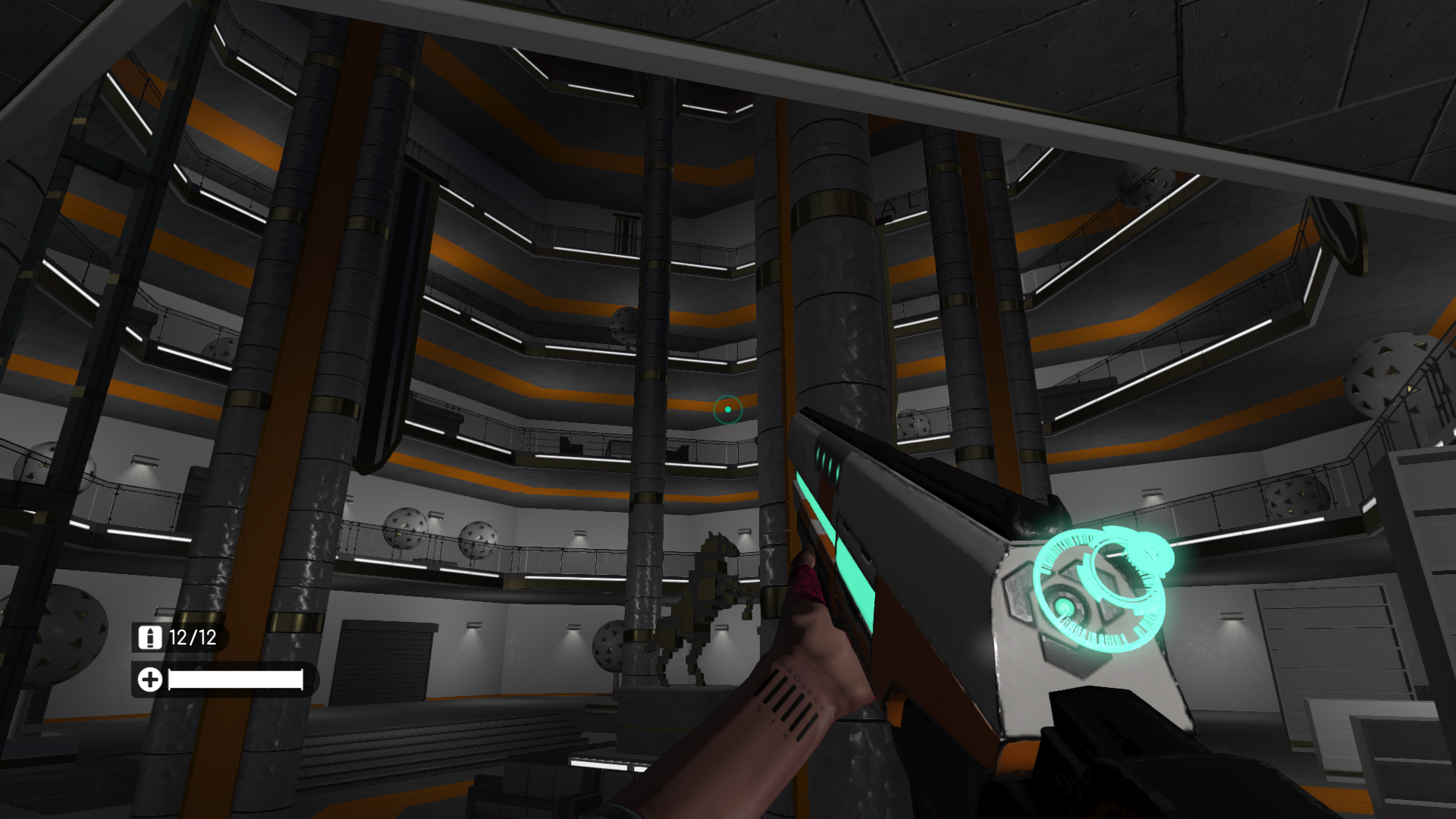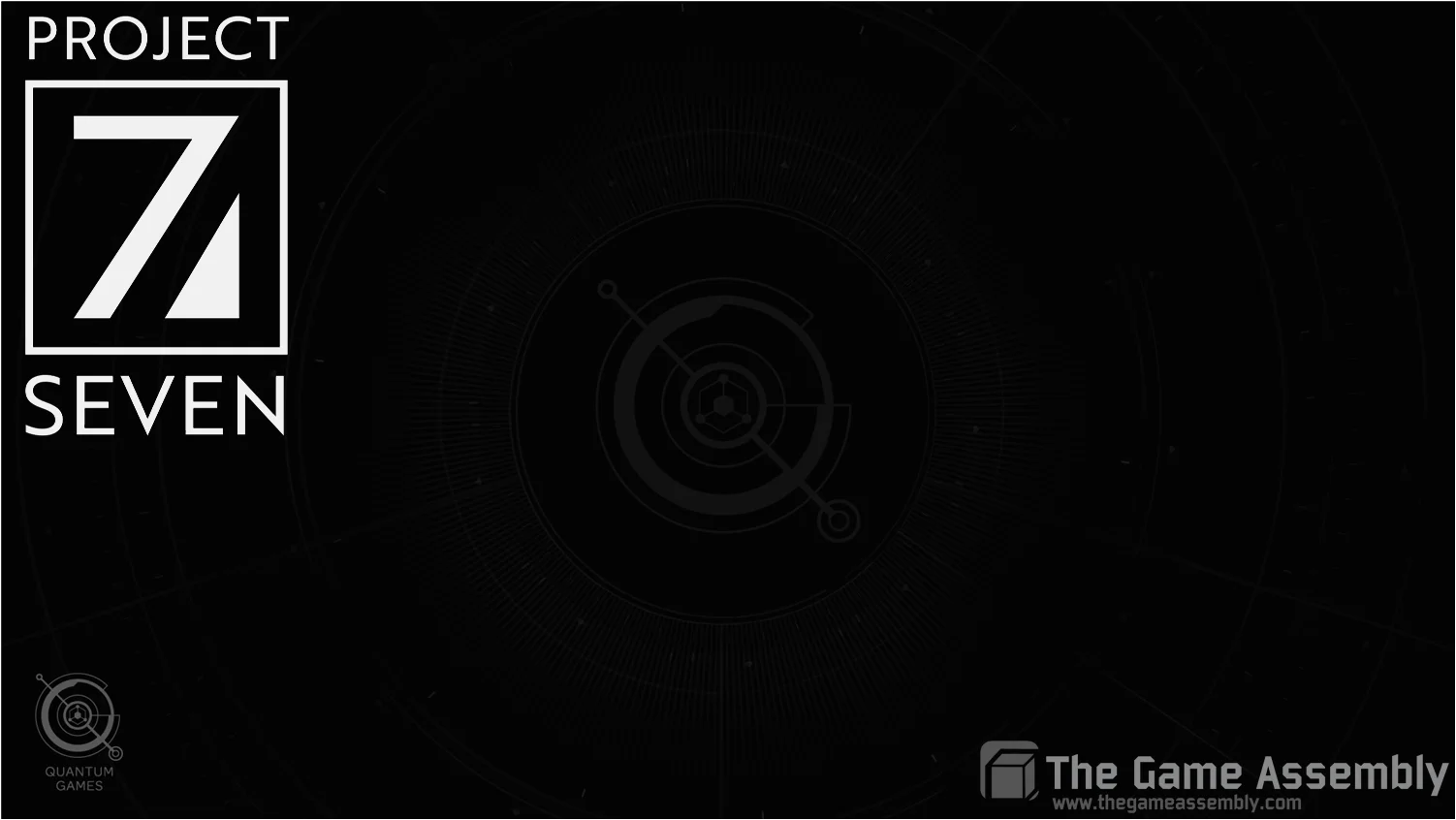Project Seven - First Person Precision Shooter
Summary
Waking in a elevator heading down into the unknown with someone urging you to escape. Slowly it dawns upon you that you're the unwilling participant in a weird experiment. Armed only with a pin-point accurate railgun you need to survive the deadly experiment long enough to escape.
My Contributions
- Level design in Unity of 4 out of 7 chambers
- Game design and tweaking
- LUA Scripting
- Story
Project details
- Single player game
- Created in 10 weeks - 4 hours/day
- 15 min gameplay
The Quantum Games Team
Level Designers:
Fredrik Sjö - Carl-Henrik Andersson
Programmers:
Marcus Stein - Oscar Öhrn - Johan Anderdahl - Oliver Andersen
Artists:
Henrik Giang - Johan Ernstsson - Ted Flodman Söderberg - Magnus Quach
Tech Art:
Peter Hamlin
Design Vision
In this project the team wanted to create a game using a more realistic feel than the previous Quantum Games. Knowing this would require a lot out of the various disciplines set up a gameplay concept that would work with this vision. As a level designer I was excited to design levels trying to active a degree of realism. Since 10 weeks is a too short time to create a realistic FPS game we decided to set the gameplay in a testing facility that could place the non-realistic parts in a context.
I once again turned to pictures for inspiration. I wanted to create one open, spacious level and one with a more cramped feeling.
For my open level I went for a mall. The open layout and scarcely propped floors would work well with our limits of available props and at the same time offer interesting gameplay in the form of a multi-floored environment. I wanted to create a feeling of vertigo and looked at pictures with elevators descending trough malls. A mall from Indonesia in particular caught my eye due to it's layout and clean shapes.
For my other level I focused on Asian capsule hotels. I liked how I with few assets could create a believable level. The setting of a cramped sleeping environment worked with the general story and lastly I could see how the gameplay with a rows of traversable pods could fun for a player. I pitch a idea to the team about the a smoke filled floor obscuring vision if the player did not stand on the row of pods.
Indonesian malls served as my main inspiration for the mall
Asian capsule hotels and environments
Design Process
We changed the pipeline for this game. With the artist having a limited time to polish assets we decided to try out a blockout in Probuilder first and then set the modular pieces from what we decided was needed from the blockout. In this state we could already try the general feel of the level with a scripted unity FPS. This was helpful to get my proportions and distances more accurate. From the blockout the team built modular pieces and props that would be suitable for our levels.
Early concept Blockouts of Mall. I wanted the tube like plaza to be a vertical fighting experience.
And the Capsule Hotel (with some ceilings removed)
White Box
Once we had received the modular pieces I started to build towards the whitebox. I had to make some changes in the Levels. The major change was a divide in the levels into smaller parts to facilitate higher FPS the other was cutting the first part of the mall since the team felt it was not possible to complete all we had planned.
Mall: First part. Whitebox Pink traingle are enemies
Mall: second part. Hard to capture but the elevator decent was the UPS for this part.
Hotel: first part. reception and two paths. (one blocked)
Hotel: Second part. Three rooms and the end fight with a elevator and lot of scripting
Combining the Levels
In order to increase the production speed we had spitted the dressing, light, decals and particles from the basic layouts. This way the artist responsible could work simultaneously as the designers on the levels without conflicts occurring. Once the pieces was they were combined the team could enter the gold phase and polish the game.
The different parts of the game put together made all the difference.
Level Scripting in LUA
I scripted the levels in the same fashion as when I scripted for the RoboReboot game. I used functions provided by the programmers to create level essential scripts such as elevators, doors and triggers. The collision management needed attention and forced me to put less time in environment scripts that I might have liked but since the rest of the game used a harsh style it worked anyway.
Example of LUA scripting: Shooting certain objects making light to change color
Example of LUA scripting made for the end fight. It checks if the player has activated lamps and if all lamps are active the script activates the exit elevator






